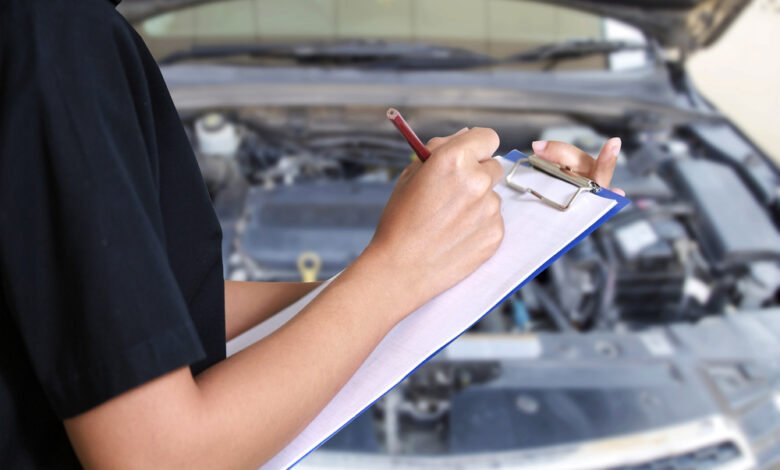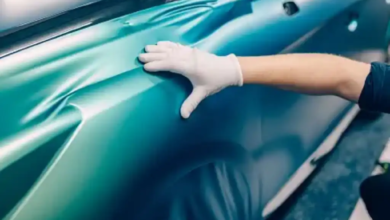How to Prepare for a West Virginia Car Inspection: Top Tips for Success

When it comes to vehicle maintenance, ensuring your car is ready for a WV inspection is crucial to avoid any unexpected delays or costly repairs. A car inspection is not just a formality; it’s a regulatory check to ensure that your vehicle is safe, roadworthy, and environmentally compliant. Understanding the areas your car will be assessed on can make the inspection process much smoother.
Check Your Vehicle’s Lights
Properly functioning lights are one of the primary components assessed during a car inspection. Brake lights, turn signals, taillights, and headlights are all part of this. Ensuring that each of these is working not only helps you pass your inspection but also contributes to overall road safety.
- Headlights: Make sure both your high beams and low beams are operating correctly. If your headlights appear dim or one side isn’t working, it may be time to replace the bulbs. Check for any cracks or condensation inside the lenses, as this can affect visibility.
- Taillights: Your taillights are crucial for indicating when you’re stopping or turning. Inspect them to ensure both the left and right taillights are functioning. Replace any broken or malfunctioning bulbs.
- Turn Signals: Test both left and right turn signals, both front and back. If you notice a rapid clicking sound when using the turn signal, it may indicate a burnt-out bulb.
- Brake Lights: Check that the brake lights illuminate properly when you press the brake pedal. You can ask a friend to check these for you while you press down on the brake pedal.
See also: Finding the Perfect Apartment in Downtown Gatineau: A Comprehensive Guide
Tire Inspection
A critical part of a car inspection is ensuring your tires are in good condition. The state of your tires affects not only your ability to pass inspection but also your safety on the road. Inspect your tires for issues such as improper tread depth or incorrect tire pressure before heading to your inspection.
- Tread Depth: Use a tread depth gauge or the “penny test” to check the depth of your tire tread. In WV, tires must have a tread depth of at least 2/32 of an inch. If the tread is too low, it’s time to replace your tires to ensure proper traction, especially in wet or icy conditions.
- Tire Pressure: Under-inflated tires are a common issue that can lead to unsafe driving conditions and failed inspections. Check the tire pressure with a tire gauge and ensure it’s in line with the manufacturer’s recommendations. Most cars have a sticker inside the driver’s side door that lists the correct tire pressure.
- Tire Condition: Look for visible signs of damage such as cracks, bulges, or punctures in the tire’s sidewalls. If you spot any of these, replace the tire before your inspection to avoid failing the safety portion of the inspection.
Brake Inspection
Among a vehicle’s most important safety elements is its braking system. A car inspection will assess whether your brakes are up to standard, so performing a brake inspection beforehand can help you avoid unexpected issues.
- Brake Pads: Be sure to measure the brake pad thickness. If the pads are worn down to 1/4 inch or less, it’s time to replace them. Worn brake pads can lead to reduced braking efficiency and a potentially dangerous driving situation.
- Brake Rotors: Inspect the brake rotors for grooves or excessive wear. If you notice any signs of damage or if the brake pedal feels soft or spongy when pressed, the rotors may need to be replaced or resurfaced.
- Brake Fluid: Ensure the brake fluid is at the proper level. Low brake fluid can lead to reduced braking performance and could result in a failed inspection. If the brake fluid is discolored, it might be time for a fluid flush and replacement.
- Check for Unusual Noises: Listen for any squealing or grinding noises when you apply the brakes. These sounds could indicate that the brake pads need replacing or that there’s an issue with the rotors.
Emissions System Check
In West Virginia, an emissions system check is a crucial component of the vehicle inspection process. A failing emissions system can lead to higher levels of pollutants being released into the air and could cause your car to fail inspection.
- Check the Check Engine Light: If your check engine light is on, it could indicate an issue with your emissions system. Many problems related to the exhaust or emissions system can trigger the check engine light, so make sure you have any warning lights addressed before your inspection.
- Exhaust Leaks: Look and listen for signs of exhaust leaks. If you hear loud noises or smell unusual fumes coming from under the vehicle, there may be a leak in your exhaust system. Leaks can cause your car to fail the emissions portion of the inspection.
- Fuel Efficiency: A sudden drop in fuel efficiency can indicate a problem with the emissions system. If you’ve noticed that your car is using more fuel than usual, it might be worth having the system checked for faults.
- Emissions Testing: Some vehicles will require a specific emissions test as part of the car inspection. Be sure to have any necessary maintenance done to ensure your emissions system is functioning properly, including replacing an old catalytic converter or fixing any issues with the oxygen sensors.
Conclusion
A West Virginia car inspection is essential for ensuring that your vehicle is roadworthy, safe, and environmentally compliant. By taking the time to prepare your vehicle for the inspection, you can avoid costly repairs, re-inspections, and delays. Regularly checking your vehicle’s lights, tires, brakes, and emissions system will ensure that everything is functioning properly and ready for inspection. Following these tips can help make the process of getting your car inspected in West Virginia seamless and stress-free. With a little preparation, you can ensure your vehicle passes inspection with flying colors and stays in top condition for the road ahead.





